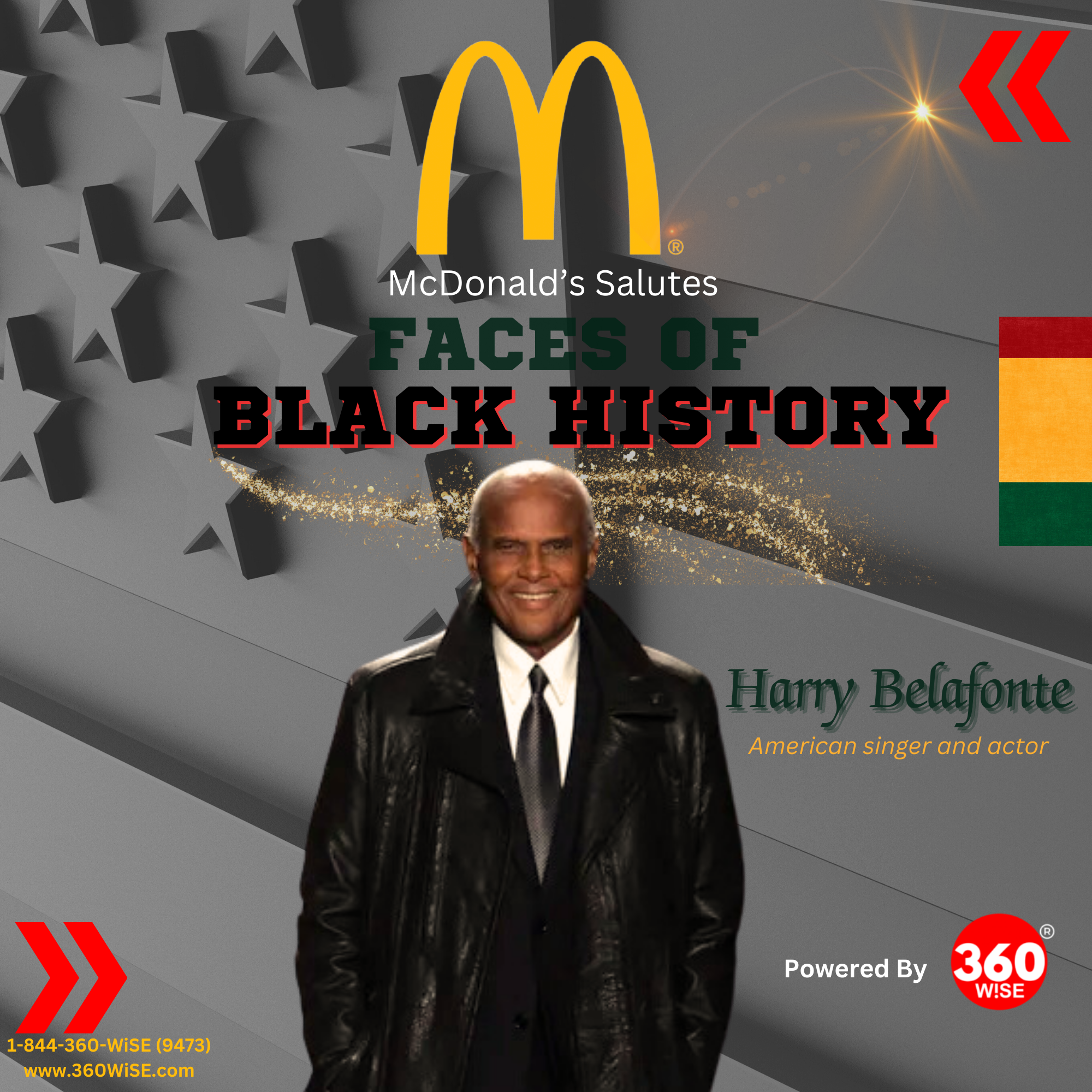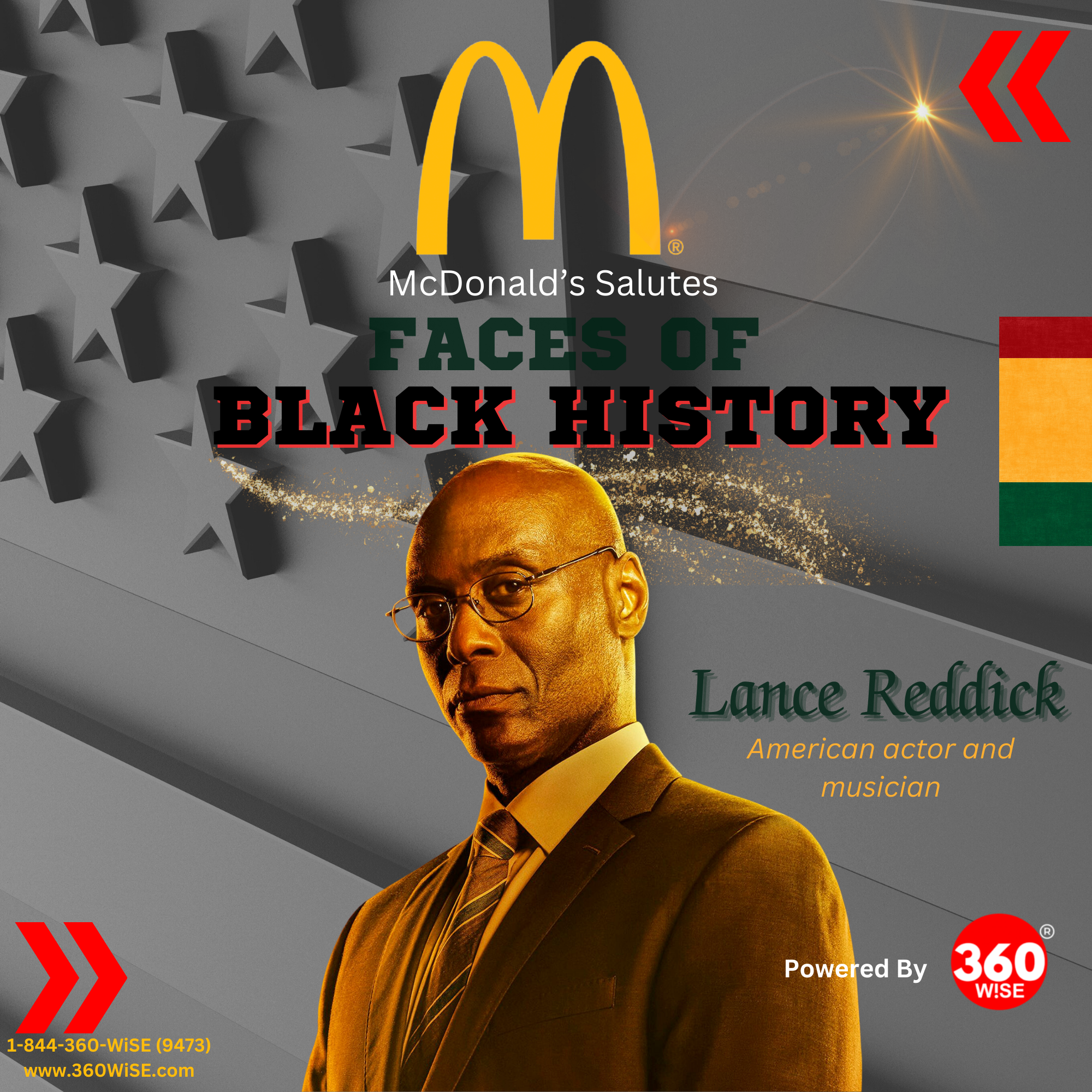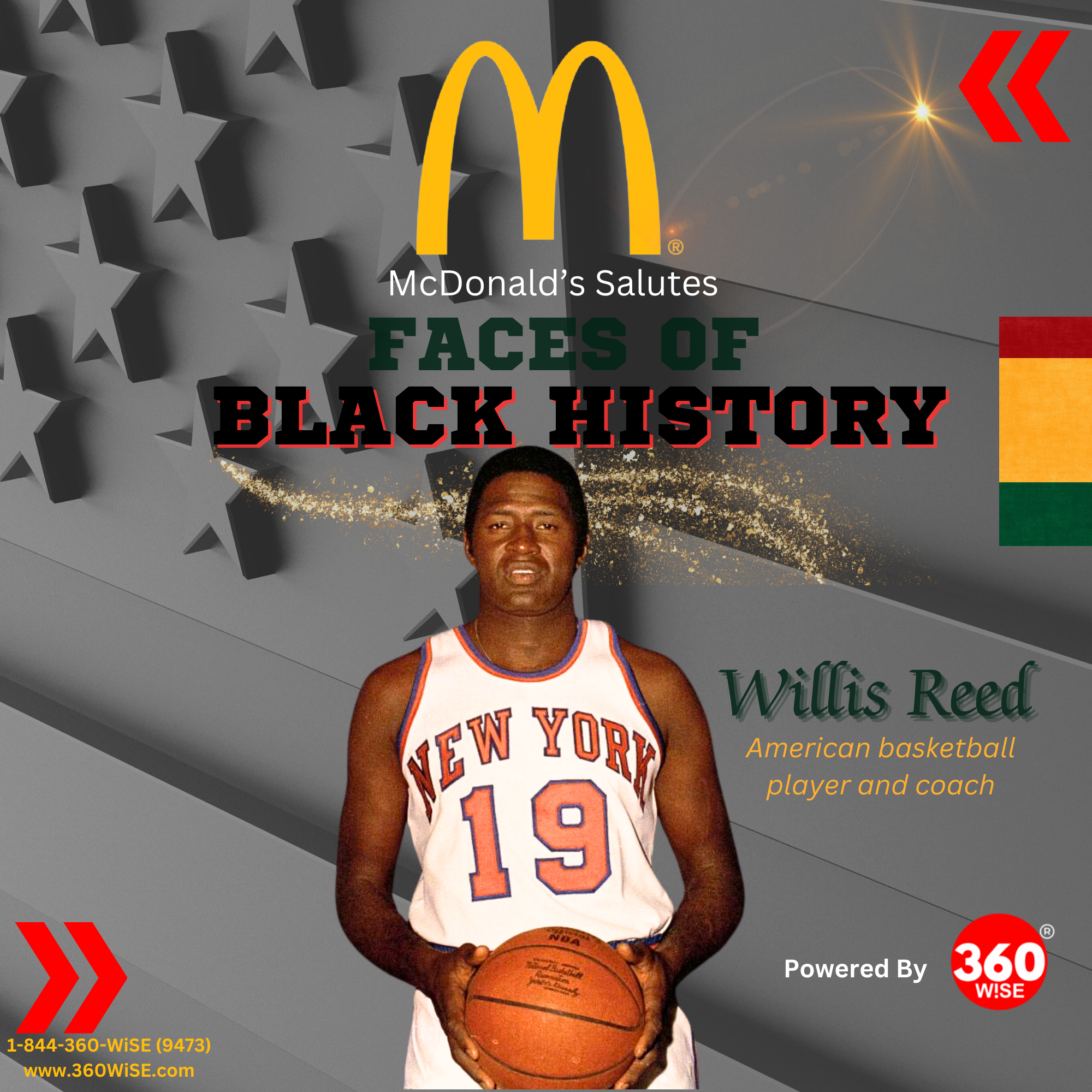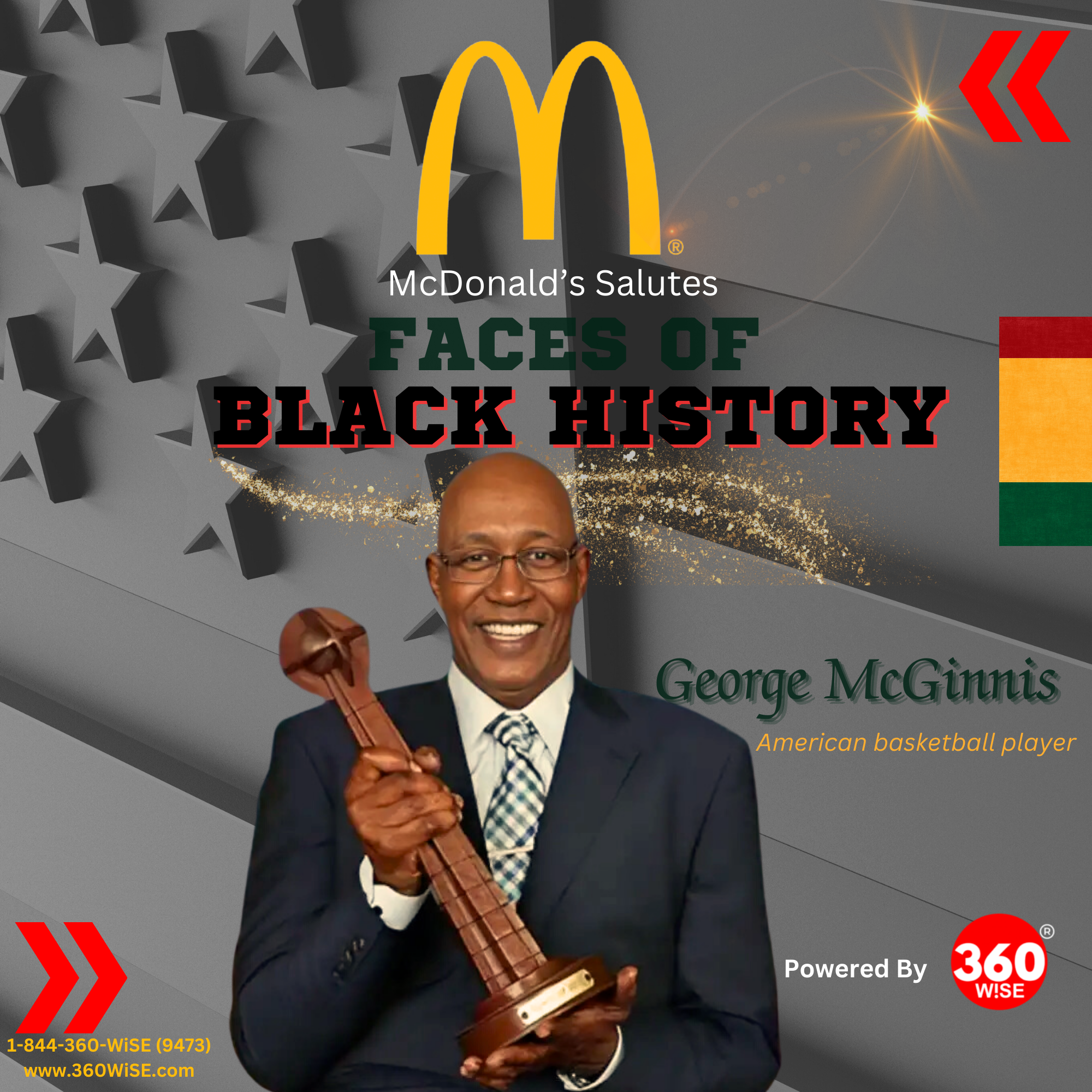 Salutes Faces of Black History Back To McDonald's Salutes Faces of Black History 2025
Salutes Faces of Black History Back To McDonald's Salutes Faces of Black History 2025
Wilma Rudolph

Olympic Champion
Medical experts once declared Wilma Rudolph would never walk again. Yet her story stands tall as one of sports’ most powerful narratives – a young girl who conquered polio to become an Olympic champion. Her determination shone through years of wearing a leg brace, leading her to emerge as one of history’s most gifted athletes.
Rome’s 1960 Summer Olympics marked Rudolph’s defining moment. She accomplished an unprecedented feat for American women – three gold medals in track and field at a single Olympics. Her swift, elegant running style captivated European audiences, who named her “The Black Gazelle.” World records in both 100-meter and 200-meter events crowned her the fastest woman globally.
Rudolph’s legacy extends beyond athletic achievements into social progress. Her journey from a child struggling to walk to an Olympic icon broke barriers in both sports and society. Each victory on the track strengthened her voice as a champion for change, proving that excellence knows no boundaries. Her story embodies the pure power of human spirit and athletic brilliance.
Early Struggles with Polio and Recovery
Diagnosis and Medical Challenges
Wilma Rudolph entered the world prematurely in 1940, weighing merely four and a half pounds1. Her childhood brought fierce battles against multiple illnesses – scarlet fever and double pneumonia struck at age four2. The most devastating blow came when polio paralyzed her left leg3.
Family Support System
The strength of family bonds shaped Rudolph’s recovery story. Her position as the 20th child among 22 siblings created a powerful support system4. Weekly healing journeys united her mother and family members for 90-minute round trips to Nashville’s Meharry Medical College, the sole facility serving African American patients2. Her siblings formed a dedicated care team, taking shifts to deliver four daily massage sessions, steadily rebuilding strength in her weakened leg5.
The Power of Determination and Physical Therapy
Raw determination and consistent therapy marked each step of Rudolph’s recovery path. Her initial companion – a heavy steel brace – sparked early feelings of frustration1. Yet this metal framework became her first step toward mobility. Age six brought triumphant moments of single-leg hopping6, while age eight saw her moving with renewed confidence, supported by her leg brace6.
Hope took physical form when doctors created her specially-made orthopedic shoes5. Her mother’s voice rang with unwavering faith – “You will walk again” – challenging every medical prediction of permanent disability2. This blend of relentless therapy and family devotion produced what doctors deemed impossible: at age twelve, she walked without assistance4.
Science marveled at her body’s resilience. Her nervous system adapted brilliantly – single nerves learned to command multiple muscle fibers, creating new pathways around polio’s damage7. This remarkable physical triumph laid the foundation for her future athletic glory.
Rise to Athletic Excellence
High School Basketball Star
Basketball unveiled Rudolph’s natural athletic gifts. Her journey began on the junior high team bench, yet her talents quickly earned her a starting guard position8. Pure shooting excellence marked her breakthrough – she scored 32 points without a single miss during a mid-season tournament8. Her final season showcased consistent brilliance with 35 points per game8.
Tennessee State University Training
Destiny arrived when Ed Temple, a visionary women’s track coach, spotted Rudolph’s talent during a basketball tournament at Pearl High School8. His invitation to Tennessee State University’s summer training camp opened fresh horizons for her athletic path9. Temple’s expert guidance molded her raw talent into focused excellence10.
Early Olympic Experience in 1956
Athletic greatness called at merely 16 years old when Rudolph earned her spot on the U.S. Olympic Track and Field Team9. Melbourne welcomed her as the youngest American athlete, where she tackled both individual and relay challenges3. Though the 200-meter preliminary heat proved challenging, her spirit soared in the 4×100-meter relay with her Tennessee State Tigerbelles teammates3. Standing proud alongside Isabelle Daniels, Mae Faggs, and Margaret Matthews, she helped secure bronze with a world-record-matching time of 44.9 seconds3.
The Olympic experience sparked her next chapter – she joined Tennessee State University in 1957 with a track scholarship11. Temple’s continued guidance set the stage for what would become her legendary performance at the 1960 Olympics10.
Historic 1960 Olympic Triumph

Breaking World Records in Rome
Rome’s Stadio Olimpico witnessed athletic history unfold during the scorching summer of 1960. Rudolph faced nine grueling races across eight days on a cinder track, with temperatures soaring to 43°C (104°F)9.
Three Gold Medal Performance
Pure speed marked Rudolph’s 100-meter dash mastery – she matched the world record at 11.3 seconds in semi-finals9. Her final sprint blazed to 11.0 seconds, though winds denied official record status3. Olympic history fell next as she claimed the 200-meter record with 23.2 seconds in her opening heat3.
September 7, 1960, brought her crowning achievement in the 4×100-meter relay. United with Tennessee State teammates Martha Hudson, Lucinda Williams, and Barbara Jones, Rudolph anchored their path to glory. Their semifinal performance set a world record of 44.4 seconds3. Drama peaked in finals when a near-dropped baton tested her resolve, yet she surged past Germany’s anchor runner, sealing victory at 44.5 seconds9.
International Media Sensation
Television’s first worldwide Olympic coverage showcased Rudolph’s brilliance to global audiences3. European media celebrated her with poetic nicknames – Italy’s “La Gazzella Nera” (The Black Gazelle) and France’s “La Perle Noire” (The Black Pearl) captured her essence3.
Europe embraced their new champion with passionate enthusiasm. Cologne needed mounted police to manage adoring crowds, while Berlin’s fans surrounded her bus, their cheers only quieting after her acknowledgment12. Standing alongside rising stars like Cassius Clay (later Muhammad Ali), Rudolph embodied both athletic excellence and graceful dignity, earning worldwide admiration3.
Impact on Civil Rights Movement
Breaking Racial Barriers
Olympic glory empowered Rudolph’s voice for social change. Her bold stance against segregation sparked historic change in Clarksville, Tennessee. She demanded integration for her homecoming celebration, leading to the October 4, 1960, “Welcome Wilma Day” – the first racially integrated event in city history13. The groundbreaking banquet drew 1,100 attendees, marking a powerful shift in community dynamics14.
Integration Advocacy
Rudolph’s influence resonated far beyond athletic arenas. Her passionate involvement fueled protests across Clarksville until segregation laws were struck down15. Her role as goodwill ambassador to West Africa expanded her message globally16. Standing tall as one of America’s most prominent Black women during the early 1960s3, she wielded her platform to champion civil rights causes.
Role Model for African American Athletes
Fresh paths opened as Rudolph challenged established norms. Her excellence shattered gender barriers at traditional male events, welcoming women into prestigious competitions like the Millrose Games3. Recognition followed when she became the first woman honored with the National Collegiate Athletic Association’s Silver Anniversary Award in 19906. Her achievements created opportunities for future African American female athletes, setting new standards for excellence and activism.
Rudolph redefined athletic identity in 1960s America. She showed the world powerful images of Black womanhood in sports, blazing trails for champions like Serena Williams17. Her dedication continued through mentoring underprivileged youth and coaching at DePauw University18, while promoting educational growth through athletics19.
Conclusion
Wilma Rudolph’s story radiates pure human spirit and possibility. Medical experts once declared walking impossible, yet she soared beyond their limits to become the world’s fastest woman, claiming three Olympic gold medals. Her courage reached beyond athletic arenas, demanding – and winning – Clarksville’s first integrated celebration.
Athletic brilliance merged with social conscience as Rudolph carved new paths for African American athletes. Today, her powerful legacy shines through tributes like the 360Wise McDonald’s Faces of Black History Time Capsule, honoring her lasting mark on American sports and society.
Her journey speaks truth to every dreamer: physical challenges cannot cage human potential. Though she left us in 1994, her spirit lives on, lighting the way for athletes, activists, and dreamers worldwide. Each step of her path – from a polio-stricken child to Olympic champion – proves that fierce determination paired with loving support turns impossible dreams into golden reality.
References
[1] – https://www.timeforkids.com/g56/this-is-wilma-rudolph/
[2] – https://usopm.org/wilma-rudolph/
[3] – https://en.wikipedia.org/wiki/Wilma_Rudolph
[4] – https://www.olympics.com/en/athletes/wilma-rudolph
[5] – https://www.visitclarksvilletn.com/plan/clarksville-connections/athletics/wilma-rudolph/
[6] – https://www.womenshistory.org/education-resources/biographies/wilma-rudolph
[7] – https://drmirkin.com/histories-and-mysteries/wilma-rudolph-polio-survivor.html
[9] – https://www.olympics.com/en/news/wilma-rudolpha-the-trio-of-golds
[10] – https://tsutigers.com/news/2020/3/30/IMPORTED_STORY_9937.aspx
[11] – https://www.womenofthehall.org/inductee/wilma-rudolph/
[12] – https://www.espn.com/sportscentury/features/00016444.html
[14] – https://www.tuesdayforumcharlotte.org/2022/03/01/wilma-rudolph-olympian-civil-rights-advocate/
[15] – https://amazingwomeninhistory.com/wilma-rudolph-olympic-gold-medalist-civil-right-pioneer/
[17] – https://www.aaihs.org/remembering-wilma-rudolph-the-queen-of-the-olympics/
[18] – https://olympics.com/en/athletes/wilma-rudolph
[19] – https://www.depauw.edu/stories/details/wilma-rudolph-olympic-gold-to-depauw-gold/

QUICK FACTS

Thank you to the New York Tristate Owner and Operators Association for your continued support.


























